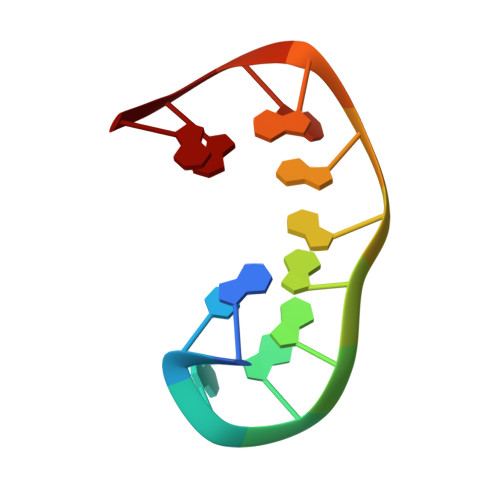GC ends control topology of DNA G-quadruplexes and their cation-dependent assembly.
Pavc, D., Wang, B., Spindler, L., Drevensek-Olenik, I., Plavec, J., Sket, P.(2020) Nucleic Acids Res 48: 2749-2761
- PubMed: 31996902
- DOI: https://doi.org/10.1093/nar/gkaa058
- Primary Citation of Related Structures:
6SX6, 6SYK - PubMed Abstract:
GCn and GCnCG, where n = (G2AG4AG2), fold into well-defined, dimeric G-quadruplexes with unprecedented folding topologies in the presence of Na+ ions as revealed by nuclear magnetic resonance spectroscopy. Both G-quadruplexes exhibit unique combination of structural elements among which are two G-quartets, A(GGGG)A hexad and GCGC-quartet. Detailed structural characterization uncovered the crucial role of 5'-GC ends in formation of GCn and GCnCG G-quadruplexes. Folding in the presence of 15NH4+ and K+ ions leads to 3'-3' stacking of terminal G-quartets of GCn G-quadruplexes, while 3'-GC overhangs in GCnCG prevent dimerization. Results of the present study expand repertoire of possible G-quadruplex structures. This knowledge will be useful in DNA sequence design for nanotechnological applications that may require specific folding topology and multimerization properties.
Organizational Affiliation:
Slovenian NMR Center, National Institute of Chemistry, 1000 Ljubljana, Slovenia.














